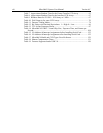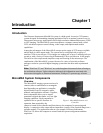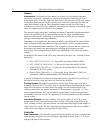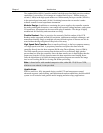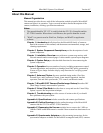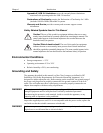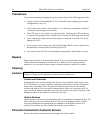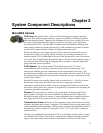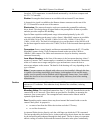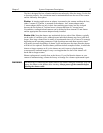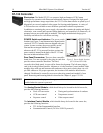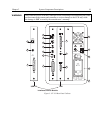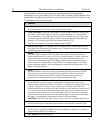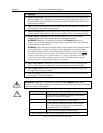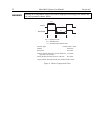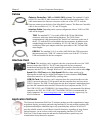
16 MicroMAX System User Manual Version 6.C
forced air. CCD temperature is controlled and monitored by via the host computer and
the ST-133 Controller.
Shutter: Rectangular head cam
eras are available with an internal 25 mm shutter.
A shutter drive signal is available at the Remote shutter connector on the rear of the
ST-133 Controller or on the rear of the cam
era.
Electronics: The camera electronics enclosure contains the preamplifier and array
driver board. This design keeps all signal leads to the pream
plifier as short as possible
and also provides complete RF shielding.
Speed of data acquisition and dynamic range is determ
ined primarily by the A/D
converter used (binning on the array is also a factor). MicroMAX cameras are available
with 100 kHz (16-bit A/D), 100 kHz /1 MHz (16-bit A/D), 1 MHz (12-bit A/D), or
1 MHz (16-bit A/D). The dual 16-bit digitizers give you the choice of the 100 kHz A/D
for the better signal-to-noise ratio or the 1 MHz, 16-bit A/D for increased data acquisition
speed.
Connectors: Power, control signals, and data are transm
itted between the ST-133 and the
MicroMAX camera via the 25-pin D connector located on the rear of the 1 MHz or
100kHz/1 MHz camera. The cables and connectors are keyed so that they cannot be
connected incorrectly.
Lens Mount Housing: At the front of the cam
era is the lens mount housing, either C-
mount or F-mount. The C-mount employs a standard size thread to make the connection
while an F-mount uses a tongue and groove type mechanism to secure the lens or
microscope adapter to the camera. The details of the housing will vary depending on the
type of mount.
Note: C-mount cameras are shipped with a dust cover lens installed. Although this lens
is capable of providing surprisingly good images, its throughput is low and the image
quality is not as good as can be obtained with a high-quality camera lens. Users should
replace the dust-cover lens with their own high-quality laboratory lens before making
measurements.
If you have a camera with a UV scintillator coated CCD, protect it from excessive
exposure to UV radiation. This radiation slowly bleaches the scintillator, reducing
sensitivity.
Caution
Mounting Holes: The round head camera has four ¼″ x 20 UNC threaded holes on the
camera body at 90° intervals. These holes are provided for flexibility in mounting the
camera to your system optics. The rectangular head camera can be ordered with an
optional tripod mount kit.
Fan: Depending on the cam
era, there may be an internal fan located inside or on the
camera's back panel. Its purpose is:
• to rem
ove heat from the Peltier device that cools the CCD array
• to cool the electronics.
An internal Peltier device directly cools the cold finger on which the CCD is m
ounted.
The heat produced by the Peltier device is then removed by the air drawn into the camera
by the internal fan and exhausted through the back panel. The fan is always in operation
and air cooling of both the Peltier and the internal electronics takes place continuously.



